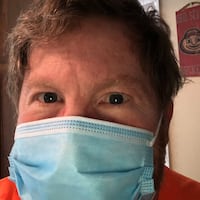“The name change I think helps solidify that we are no longer just a community hospital,” he said. “We are a regional medical center. We are a Trauma Level 3.”
Fewer than 13 percent of the Hamilton community realizes the hospital is part of Kettering Health’s network, “so the disconnect is huge,” he said about the hospital system that acquired Fort Hamilton 11 years ago. “The reputational capital is in the Kettering name, and we want to make sure that everybody knows we are part of Kettering.”
The hospital employs nearly 1,000.
“The services provided here at Hamilton have never been so broad and extensive as we are today,” Connovich said. “We are ranked in the 96th percentile (top 4 percent) when it comes to cardiac care in the country — that is comparing to Cleveland Clinic, Mayo Clinic, all those.”
Connovich said the Hamilton hospital has some of the fastest times for delivering an anti-coagulant once stroke patients through the area in the Greater Dayton area. Some highlights:
- For heart patients, the hospital measures the time from when patients enter the hospital to when a balloon is inserted to widen narrowed arteries. “Our last patient actually was 17 minutes,” he said Wednesday. “National standards are they say you try to shoot for 60 minutes. This is how fast we’re getting.” Thanks to collaboration with emergency squads, patients bypass the emergency room and go directly to the catheter lab. “It’s just like taking their EKG (electrocardiogram) in house, but it’s remote.”
- For strokes, information also is transmitted from emergency squads and patients go directly to CAT (computerized axial tomography) scans. Meanwhile, neurologists watch the scans online to decide whether to administer an anti-coagulant to dissolve the clot. Scans are needed before that because if a patient fell and had a head injury, promoting bleeding would be harmful. The hospital’s speed with strokes is fastest in the Greater Dayton area. “Being on the cutting edge of how we get patients where they need to be, get that treatment as quickly as possible, affects quality of life for decades. If you have a stroke today, it’s going to affect you the rest of your life.”
Connovich said the hospital’s achievements with Hamilton firefighters will be a model across Ohio, “and we are collaborating more and more with the Hamilton squad.”
The hospital and Hamilton paramedics a couple years ago created a new EMS-to-hospital notification system that lets doctors at the hospital monitor a patient’s heart rhythms and other vital statistics minutes before the ambulance has reached them. That allows doctors to make decisions and order tests immediately when patients arrive speeding the needed medical care for heart and stroke patients.
“I believe the (Fort Hamilton) name goes all the way back to its inception, which was over 92 years now,” Connovich said. “So there is some attachment to it. But we believe this is good, this is progress.
Mayor Pat Moeller called it “a great hospital in a great system.”
He added: “Fort Hamilton, that expression, means a lot to all of us who were born here.... It was a decision that was made by the board and I’m sure it was well thought-out.”
About the Author
